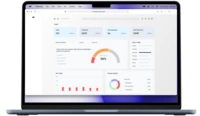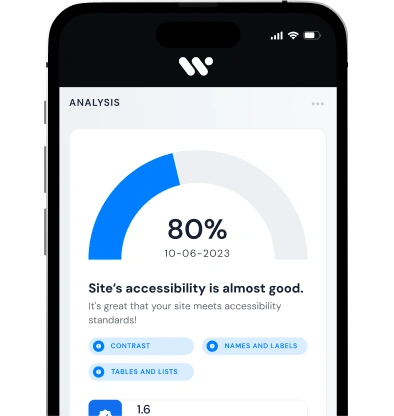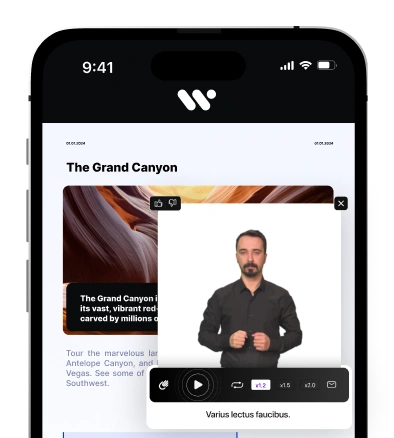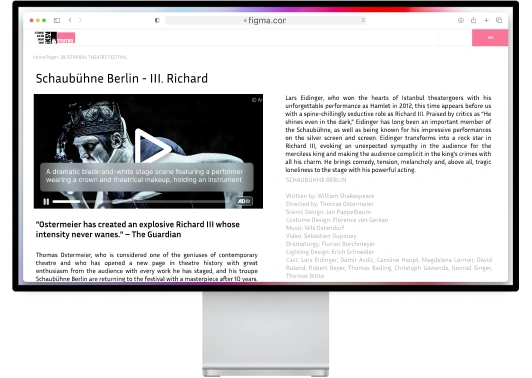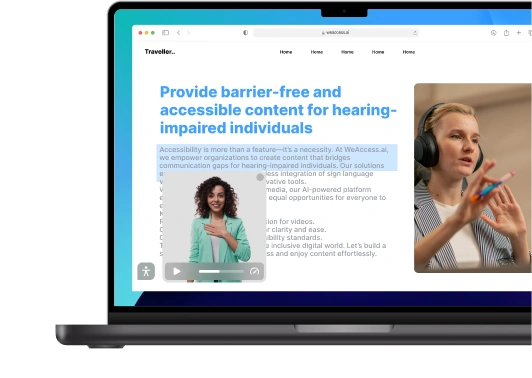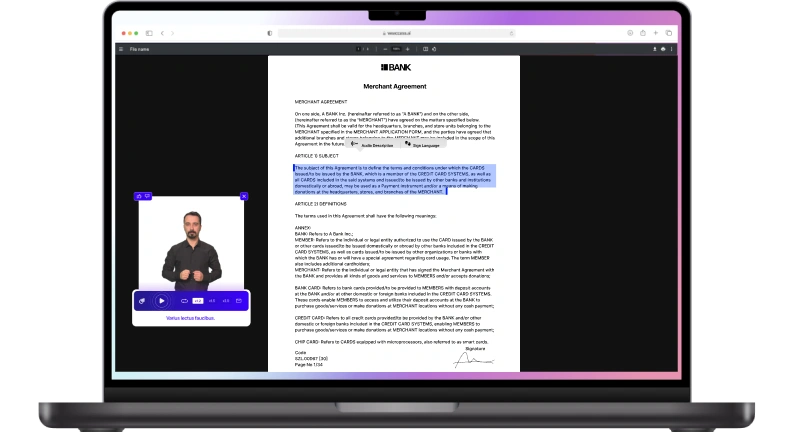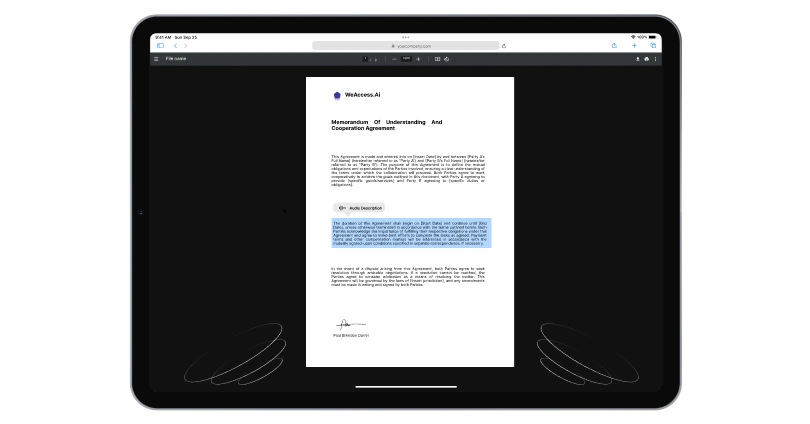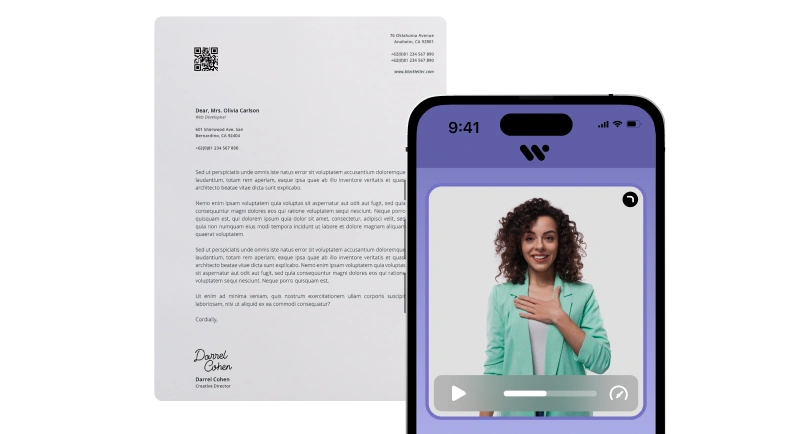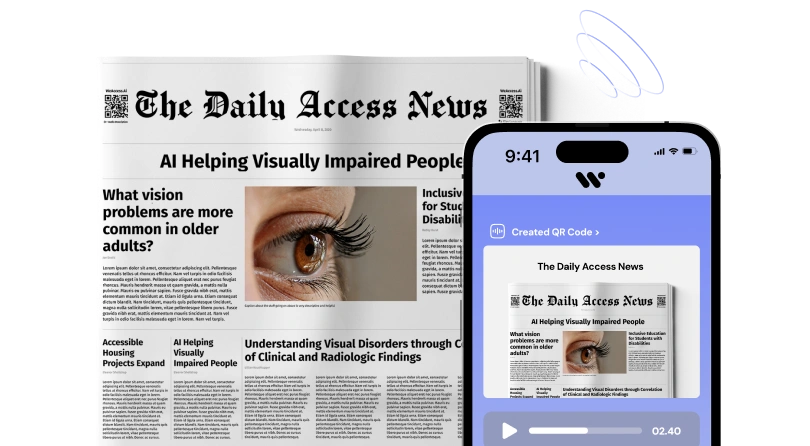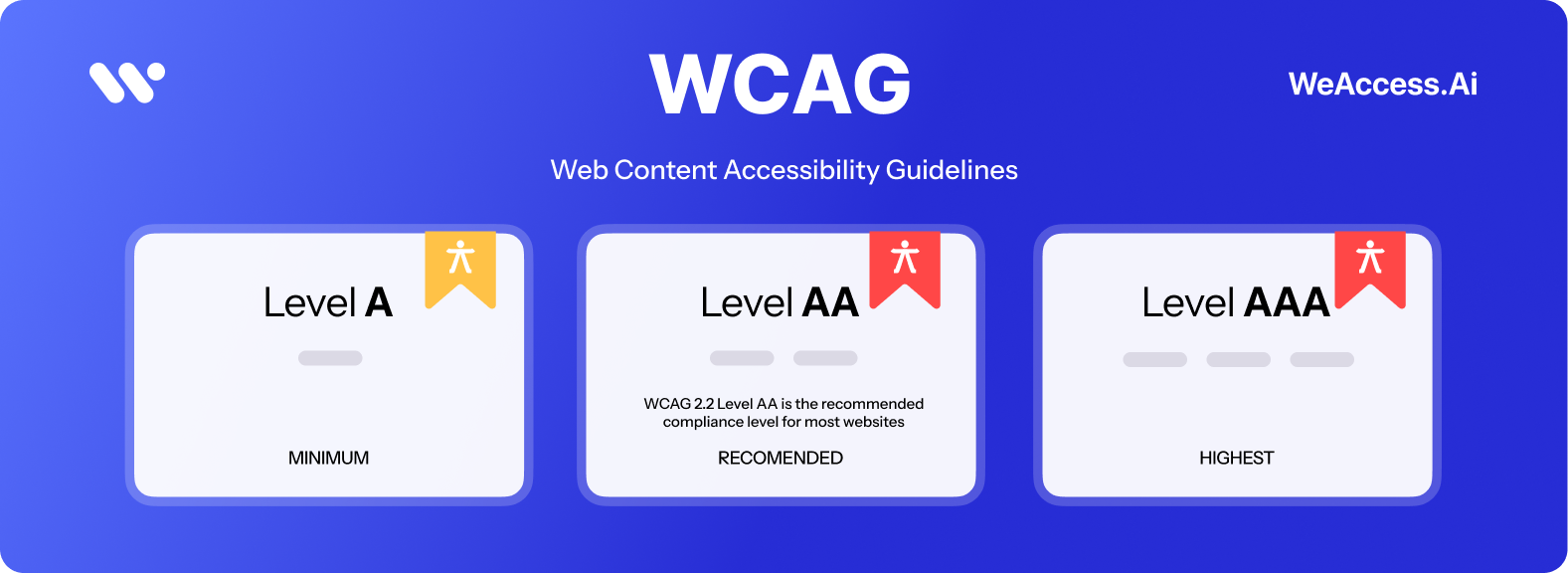What Are WCAG Compliance Levels?
What is WCAG and Why Is It Important for Accessibility?
WCAG (Web Content Accessibility Guidelines) is a set of international standards developed by the W3C's Web Accessibility Initiative (WAI) to ensure that digital content is accessible to all users, including those with disabilities.
These guidelines provide a structured framework to create inclusive design, enhancing web usability and ensuring that content is perceivable, operable, understandable, and robust for diverse users.
By adhering to WCAG, organizations can improve digital accessibility, making their websites and applications usable for people with various disabilities, such as visual, auditory, physical, speech, cognitive, language, learning, and neurological disabilities. This commitment not only fosters inclusivity but also helps in complying with legal requirements and avoiding potential legal risks associated with inaccessible digital content
How Many WCAG Versions and Levels Are There?
How Many WCAG Versions and Levels Are There?
WCAG has evolved through several versions, each improving accessibility standards:
Tablo
|
WCAG Versions |
Key Features |
|
WCAG 2.0 |
Introduced foundational guidelines for accessibility. |
|
WCAG 2.1 |
Added criteria for mobile, cognitive, and low vision accessibility. |
|
WCAG 2.2 |
Focuses on further improving accessibility, including enhanced keyboard support and visual presentation. |
WCAG defines three levels of conformance representing increasing accessibility requirements:
- Level A: Basic accessibility features (minimum conformance).
- Level AA: Addresses major barriers, including color contrast 4.5:1 and improved navigation.
- Level AAA: The highest and most comprehensive standard, including color contrast 7:1 and additional features like sign language interpretation.
These WCAG levels (A, AA, AAA) represent grading of conformance and guide developers on the level of accessibility their content meets. Most organizations aim for Level AA compliance, balancing usability and implementation feasibility.
What Are WCAG Compliance Levels and How Do They Differ?
Technical Requirements for WCAG A, AA, and AAA Levels
WCAG Level A mandates fundamental accessibility features:
- Alt text for meaningful images
- Keyboard navigability without traps
- Form field labels for clarity
- Logical heading order
- No reliance on sensory characteristics like color alone
Level AA introduces stricter criteria:
Color contrast of at least 4.5:1 for normal text
Consistent navigation across pages
Status updates conveyed programmatically
Timing not essential for tasks
Input purpose identification for form fields
Level AAA sets the highest standards:
- Color contrast of at least 7:1 for normal text
- Sign language interpretation for prerecorded audio
- Context-sensitive help available
- Extended audio description where necessary
- No essential timing for activities
What are the technical requirements for WCAG A, AA, and AAA levels?
Level A sets the foundation for accessibility by requiring essential features such as alt text for images, ensuring websites are fully keyboard navigable without keyboard traps, and including clear form field labels. It also mandates a logical heading order and full screen reader compatibility so that assistive technologies can properly interpret the content.
Building on this, Level AA adds stricter criteria to improve usability for a wider audience. This includes maintaining a minimum color contrast of 4.5:1 for text to aid users with visual impairments, ensuring consistent navigation across pages, providing status updates that screen readers can detect, and making sure timing is not essential to complete tasks, accommodating users who need more time.
At the highest standard, Level AAA requires even more rigorous accessibility measures. This includes an enhanced color contrast of 7:1, the provision of sign language interpretation for prerecorded audio and video content, and offering context-sensitive help. Additionally, it encompasses other Level AAA success criteria, such as extended audio descriptions and removing all essential timing constraints, to deliver maximum inclusivity.
How is WCAG compliance tested and certified?
WCAG compliance is tested through a thorough accessibility audit that evaluates a website or application against the WCAG accessibility guidelines and specific WCAG criteria. This process involves both automated tools and manual accessibility testing, using an accessibility checklist to identify issues related to color contrast, keyboard navigation, screen reader compatibility, and more.
After testing, organizations assess whether their digital content meets the desired WCAG conformance level (A, AA, or AAA). If compliant, they may issue a conformance claim to certify adherence to WCAG compliance requirements. While no official global WCAG certification authority exists, third-party auditors and specialized companies provide certification services to validate accessibility and help businesses demonstrate their commitment to inclusivity and legal compliance.
What legal standards require WCAG compliance?
Legal frameworks like the Americans with Disabilities Act (ADA) and Section 508 in the U.S. explicitly require websites to meet accessibility standards, often referencing WCAG AA compliant sites as the benchmark. Globally, WCAG is recognized as an international standard influencing laws such as the EU’s Accessibility Directive and Canada’s Accessible Canada Act.
Non-compliance can result in significant legal risk, including lawsuits and fines. Many organizations mitigate this risk by publishing an accessibility statement or maintaining an accessibility policy that outlines their commitment to meeting WCAG requirements and ensuring equal access.
Why is achieving WCAG A, AA, or AAA compliance important?
Achieving WCAG compliance at levels A, AA, or AAA is crucial because it:
- Ensures web accessibility AA standards are met, making sites usable for most people with disabilities.
- Helps organizations meet WCAG legal and ethical obligations, reducing legal risk.
- Improves overall user experience by enhancing navigation, readability, and interaction.
- Expands audience reach, including users with visual, auditory, cognitive, or motor impairments.
- Demonstrates social responsibility and commitment to inclusivity.
- Enables access to advanced features in AAA websites, such as sign language interpretation and extended audio descriptions.
- Provides examples of WCAG Level AA and WCAG Level AAA websites that serve as best practices for accessibility.
Frequently Asked Questions (WCAG & Accessibility)
1. Is WCAG Level A or AA compliance required?
Most organizations aim for WCAG Level AA compliance, which is considered the minimum legal and practical standard globally, offering broader accessibility than Level A.
2. What are the 4 levels of accessibility?
Accessibility is generally addressed through four POUR principles: Perceivable, Operable, Understandable, and Robust. WCAG applies these principles across three conformance levels: A, AA, and AAA.
3. What are the WCAG criteria levels?
WCAG defines three levels of conformance:
- Level A: Minimum requirements (e.g., no keyboard traps, alt text)
- Level AA: Includes A, adds standards like color contrast 4.5:1, video captions, and accessible design
- Level AAA: Most comprehensive, requiring color contrast 7:1, sign language interpretation, and more
4. What is the difference between AA and AAA accessibility?
AA accessibility ensures usable, practical access for most users; AAA accessibility demands advanced features like context-sensitive help and AAA conformance is rarely mandated for entire websites due to complexity.
5. What does AAA mean in accessibility?
AAA refers to the highest level of WCAG grading. It indicates the most accessible and inclusive experience, typically used by content providers focused on vulnerable user groups.
6. What are accessibility compliance levels?
Compliance levels are:
- Level A (basic)
- Level AA (intermediate, widely required)
- Level AAA (advanced, not always feasible for all content)
7. What are accessibility standards AA and AAA?
They are part of the WCAG standards, defined by W3C and WAI (Web Accessibility Initiative), guiding accessible web page design.
8. What is accessibility support?
It refers to ensuring content works with assistive technologies, such as screen readers or keyboard-only navigation, and satisfies accessible design best practices.
9. What is ADA compliance in relation to WCAG?
In the U.S., ADA compliance for websites often relies on WCAG AA standards to demonstrate accessibility under the Americans with Disabilities Act.
10. What are examples of WCAG Level AA and AAA websites?
Level AA examples: Government sites (e.g., NHS.uk)
Level AAA examples: Educational platforms and accessibility leaders with sign language, live support, and high color contrast (W3.org)
11. Who develops WCAG and accessibility standards?
The World Wide Web Consortium (W3C), through its WAI initiative, publishes and updates WCAG versions (2.0, 2.1, 2.2).
12. What is the minimum level to satisfy WCAG?
Level A is the minimum level, but most legal and usability guidelines recommend satisfying all Level A and AA success criteria for practical accessibility.
You may be interested website accessibility standards

